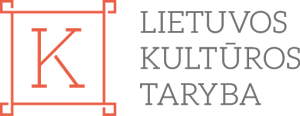#28 Where will the architect go next?
The architect goes to teach/learn
Why the talk is inspiring?
Architecture evolves in line with society. Inevitably, everyone is surrounded by their architectural environment on a daily basis. What are the different forms of architectural education? How is architecture taught at university? Why is it important to talk about designing and shaping the environment while still in school? To what extent does the development of architecture depend on public education and perception of architecture? Why is it important to broaden the field of architectural education? What are the contexts and forms in which architects talk about architecture? Why is it important for an architect to keep learning?
Talks will take place at the National Art Gallery (NDG), Konstitucijos pr. 22, Vilnius. The talks will start at 8.00 p.m. and will be held in Lithuanian.
2022
Speaker
Eglė Bazaraitė, Paulius Kliučininkas, Matas Šiupšinskas, Martynas Germanavičius
How the speaker is exceptional?
Speakers:
Eglė Bazaraitė is an architectural researcher, lecturer, and architect. She teaches History of Architecture and Landscape Architecture at the Faculty of Architecture at the Vilnius Gediminas Technical University, curates workshops, and serves as the Vice-Dean for International Relations. In 2017, she defended her PhD thesis at the University of Lisbon, Portugal, in which she researched 19th-century European Catholic suburban cemeteries. Additionally, she works with traditional Lithuanian art. She worked on the publication of books such as “ Pynimas iš vytelių ” (2013) and “Savas Margutis” (2019). Eglė is currently working on a book about the relationship between the 19th century Vilnius cemetery landscape and Christian and Baltic notions of paradise (“LAPAS” Publishing House).
Paulius Kliučininkas – architect, urban planner, and urban designer. He is working on a master’s project in Urban Planning on cooperation in the Baltic Sea Region at TU Delft in the Netherlands. He has done several projects as part of Bauland’s urban team. A fan of architectural film festivals as well as their organisation, like the festival in Rotterdam. He does not limit his architectural expression to technical projects, texts, education, and illustration. Paulius seeks to informally understand the present in theory and practice. For instance, in metamodernism.
Matas Šiupšinskas is an architect, author of scientific and journalistic articles, host of the radio programme ” Žmogus ir miestas “. His field of interest covers the history of urban planning, the development of mass construction, housing typologies, urban morphology, and the heritage of Soviet-era architecture. In 2009, he received his bachelor’s degree in Architecture from VGTU, later continued his master’s studies in History and Theory of Architecture there, and in 2021, he defended his PhD thesis in History of the Humanities at Vilnius University on the topic of “The Urban and Socio-Cultural Aspects of the Phenomenon of the Collective Garden. The Case of Soviet Lithuania”. He worked in Rolandas Paleko’s studio, interned in Luxembourg, Denmark, and the Netherlands, and together with Julija Reklaite worked on the architectural part of the Lithuanian Culture Guide publication.
Moderator:
Martynas Germanavičius is an architect who graduated from Vilnius TECH University and currently works for the Architecture Foundation. He is interested in various phenomena of spatial creation and diverse media for depicting them.
RECOMMENDS TO READ
Abysses
Pascal Quignard
Why the book is worth reading?
(Book recommended by Eglė Bazaraitė)
Difficult to decipher multi-layered, intense erudite texts. They strike a balance between the personal present and the universal past, in which one tries to discover one’s own origins – the past before memory. In a genre that is incomprehensible, or perhaps simply not yet named, the work is full of cultural references from classical Europe, which the author juggles skilfully, drawing the reader into a lyrical but in no way nostalgic game of concepts, thus making them feel part of their own time. At the same time, I would like to recommend other works by this author.
RECOMMENDS TO READ
Metamodernism: Historicity, Affect, and Depth after Postmodernism
Robin van den Akker, Alison Gibbons, Timotheus Vermeulen
Why the book is worth reading?
(Book recommended by Paulius Kliučininkas)
Long shot but balanced for those who sail far. For those who are tired of irony or who believe that sincerity or naivety are contemporary values. The authors help to define the current cultural, social, and artistic field, which balances between modernism and postmodernism. They provide a reasoned and scholarly interpretation of the present. It is interesting to see how design, architecture, urban, landscape or maritime planning are situated.
RECOMMENDS TO READ
Deviations: Designing Architecture: A Manual
Dirk Hebel, Dirk E. Hebel, Marc Angélil
Why the book is worth reading?
(Book recommended by Matas Šiupšinskas)
A simple, step-by-step guide on how to approach architectural learning. The book questions conventional architectural design tactics but does not undermine them. Rather, it leaves the familiar as a base from which it is safe to move further out into open waters, to turn processes upside down and play with chance.
RECOMMENDS TO READ
Kommunen in der Neuen Welt 1740-1972
L. ir O. M. Ungers
Why the book is worth reading?
(Book recommended by Martynas Germanavičius)
In 1968, the architect and architectural theorist O. M. Ungers and his family left Berlin for the United States. During their family travels, he and his wife Liselotte gathered anthropological data on communes and alternative models of communal living. These experiences and a historical overview of the development of New World utopias have been compiled into a book that has become a frequent reference for architects exploring the relationship between architecture as a collective form together with diverse models of living.




